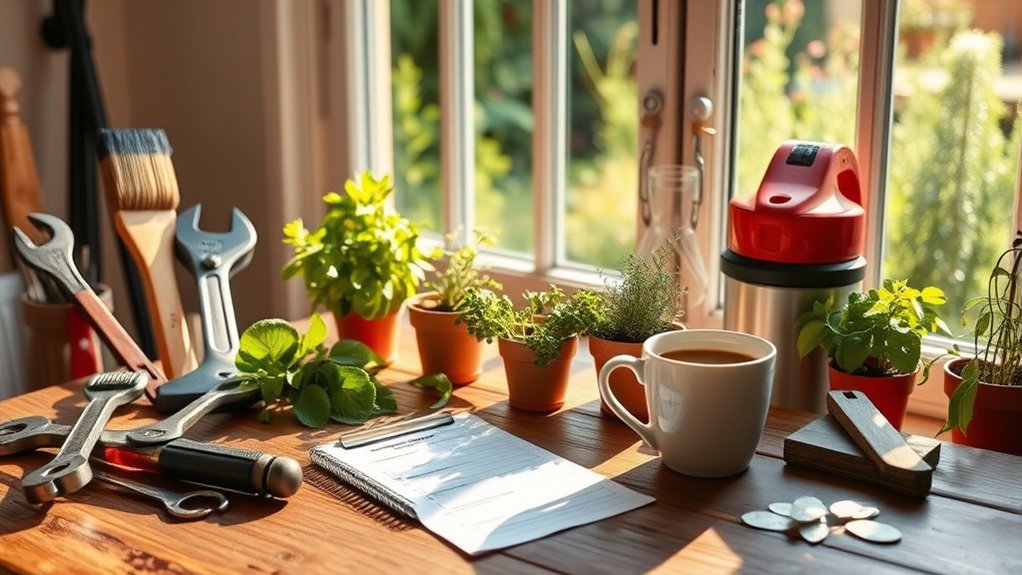I keep my home safe and comfy year-round by tackling key tasks regularly. Cleaning gutters twice a year stops water damage, and checking the roof helps catch missing shingles early. I test smoke and carbon monoxide detectors monthly, and swap out HVAC filters to keep air fresh and bills low. Sealing windows and doors prevents drafts, while cleaning range hood filters and checking bathroom grout wards off odors and leaks. Testing door locks and electrical outlets seals the deal on safety. Stick with me for a full rundown of these must-do steps.
- Key Takeaways
- Clean Gutters and Downspouts
- Inspect Roof for Damage
- Test Smoke and Carbon Detectors
- Check HVAC Filters Monthly
- Caulk Window and Door Seals
- Inspect Foundation for Cracks
- Clean Dryer Vent Annually
- Flush Water Heater Sediment
- Check Plumbing for Leaks
- Inspect Exterior Paint and Siding
- Trim Tree Branches Near House
- Check Deck and Patio Safety
- Inspect Basement for Moisture
- Test GFCI Outlets Monthly
- Clean Range Hood Filters
- Inspect Grout in Bathrooms
- Check Door Locks and Hardware
Key Takeaways
- Clean gutters and downspouts biannually to prevent water damage and ensure proper drainage away from the foundation.
- Test smoke and carbon monoxide detectors monthly, replacing batteries yearly and units every 10 years for safety.
- Inspect HVAC filters monthly and replace when dirty to improve air quality and reduce energy costs.
- Check exterior paint, foundation cracks, and wooden siding annually to prevent structural damage and moisture issues.
- Clean kitchen range hood filters and bathroom grout regularly to maintain ventilation, reduce fire risk, and prevent water damage.
Clean Gutters and Downspouts
Twice a year, in spring and fall, I make it a point to clean my gutters and downspouts—it’s one of the simplest ways to protect my home from serious water damage and pesky critters. Gutter maintenance isn’t just about clearing leaves; it prevents foundation damage and mold growth by ensuring water flows freely. When I check downspout installation, I make sure water is directed at least three to five feet away from my foundation—this keeps pools from forming near the house. Using gloves and a sturdy ladder makes the job safer and more manageable. Trust me, this small effort saves big repair costs!
Inspect Roof for Damage
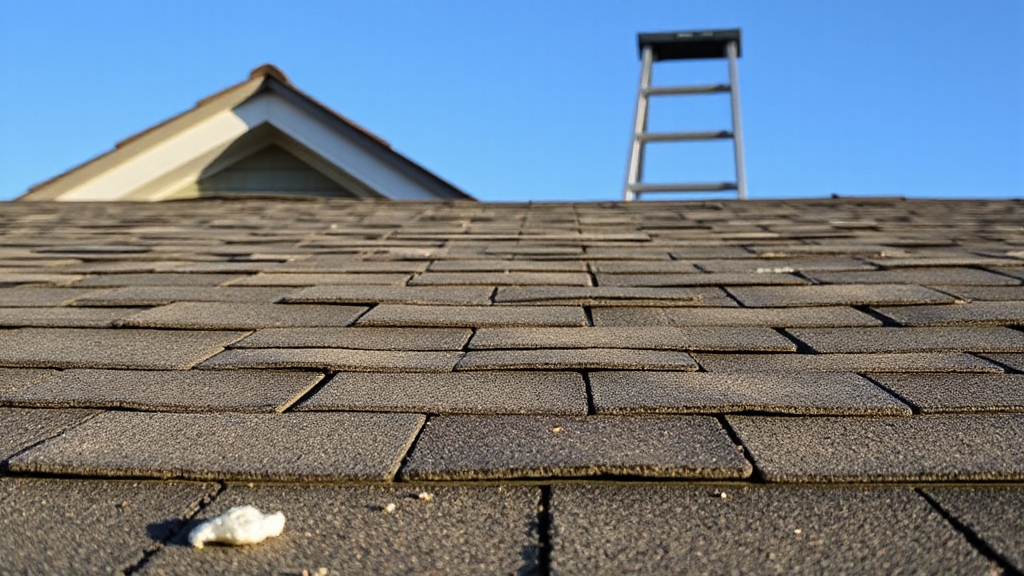
After making sure your gutters and downspouts are clear and directing water away from your foundation, it’s time to turn your attention upward to the roof itself. Regular roof maintenance tips, especially seasonal inspections in spring and fall, help catch problems early. Here’s what I look for:
- Missing, cracked, or curled shingles that need repair
- Water damage signs like discoloration or mold in the attic
- Damaged flashing around chimneys and vents
- Any areas where water might pool or soak in
Test Smoke and Carbon Detectors
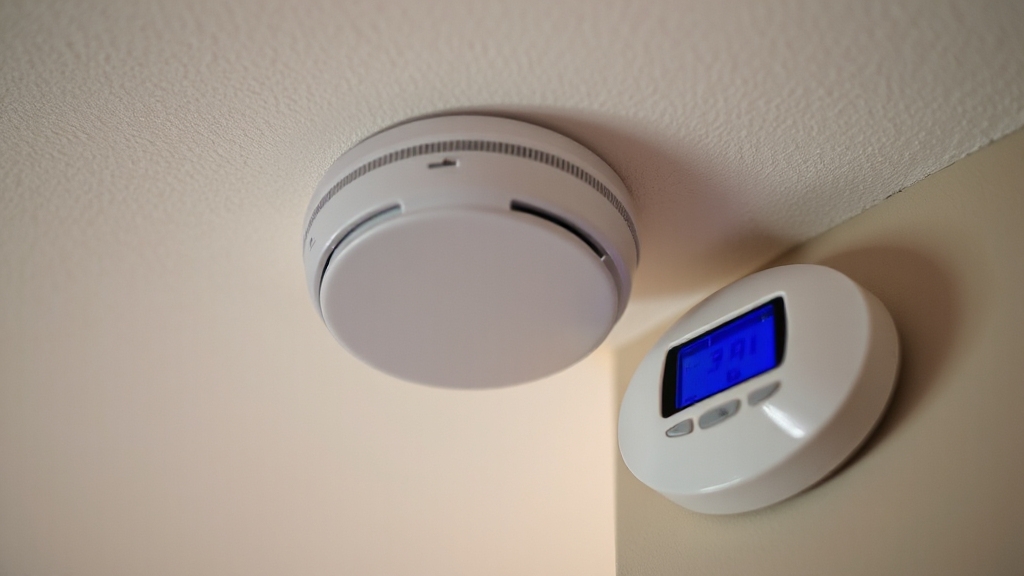
Three simple steps can make a huge difference in keeping your home safe: testing your smoke and carbon monoxide detectors regularly. I make it a point to do smoke detector testing at least once a month, ensuring those alarms will sound if there’s ever a fire. Carbon monoxide safety is just as important—this invisible gas can be deadly, so I test those detectors monthly, too. Remember to replace batteries yearly and swap out the whole unit every 10 years. By staying on top of this routine, we protect our homes and everyone inside, creating a safer place to belong.
Check HVAC Filters Monthly

Because a clean HVAC filter keeps the air flowing smoothly, I make it a habit to check mine every month. This simple step is key for efficient HVAC maintenance and better indoor air quality. Different filter types, like HEPA, can capture tiny particles, making a big difference for allergies. Here’s why monthly checks matter:
- Prevents system overheating and wear
- Saves up to 15% on energy bills
- Keeps dust and allergens out of your home
- Extends your HVAC system’s lifespan
Join me in this easy habit to breathe easier and care for your home all year!
Caulk Window and Door Seals

Caulking window and door seals is one of the simplest yet most effective ways I’ve found to boost my home’s energy efficiency. Gaps let drafts sneak in, hiking up heating and cooling bills. By using a high-quality, weather-resistant caulk, I seal those cracks to lock in warmth and keep moisture out. This moisture protection is essential—it stops water damage and mold before they start. I make it a habit to check and refresh the caulk every few years. Doing this not only cuts energy loss by up to 20% but also makes my home cozy and safe year-round.
Inspect Foundation for Cracks
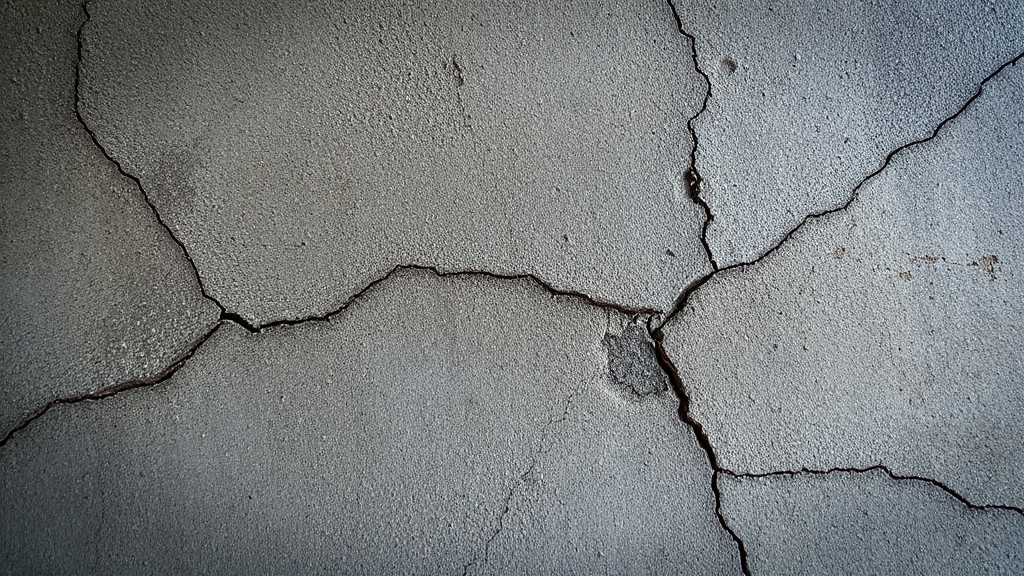
While it might not be the most exciting part of home maintenance, inspecting your foundation for cracks is something I never skip, and you shouldn’t either. It’s key to maintaining foundation stability and preventing costly damage. Here’s how I keep an eye on it:
- Check for cracks wider than a quarter inch—they need professional attention.
- Use a level to spot uneven foundation areas signaling shifts.
- Monitor soil changes around your home caused by seasons.
- Act quickly on any crack repair to stop water and mold problems.
Staying on top of this really keeps my home safe and sound.
Clean Dryer Vent Annually
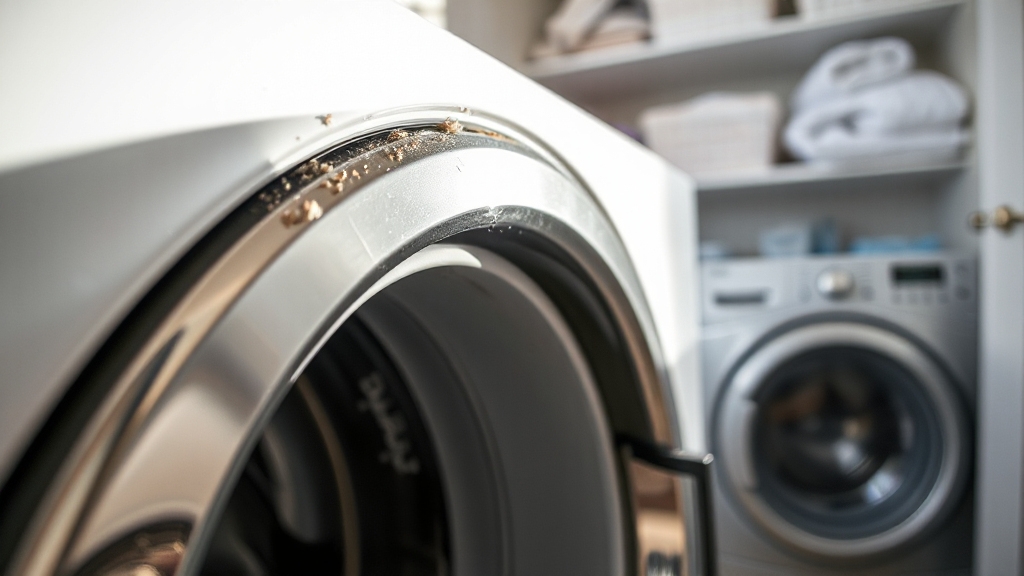
I always make it a point to clean my dryer vent at least once a year, and I highly recommend you do the same. This simple step helps with dryer fire prevention and boosts dryer efficiency improvement. Here’s why it matters:
| Benefit | Impact |
|---|---|
| Lint Buildup Removal | Reduces fire risk |
| Airflow Improvement | Speeds drying by up to 30% |
| Appliance Longevity | Prevents overheating damage |
| Energy Savings | Cuts electricity costs |
Regular cleaning keeps your home safe and your dryer running smoothly—join me in making this a yearly habit!
Flush Water Heater Sediment
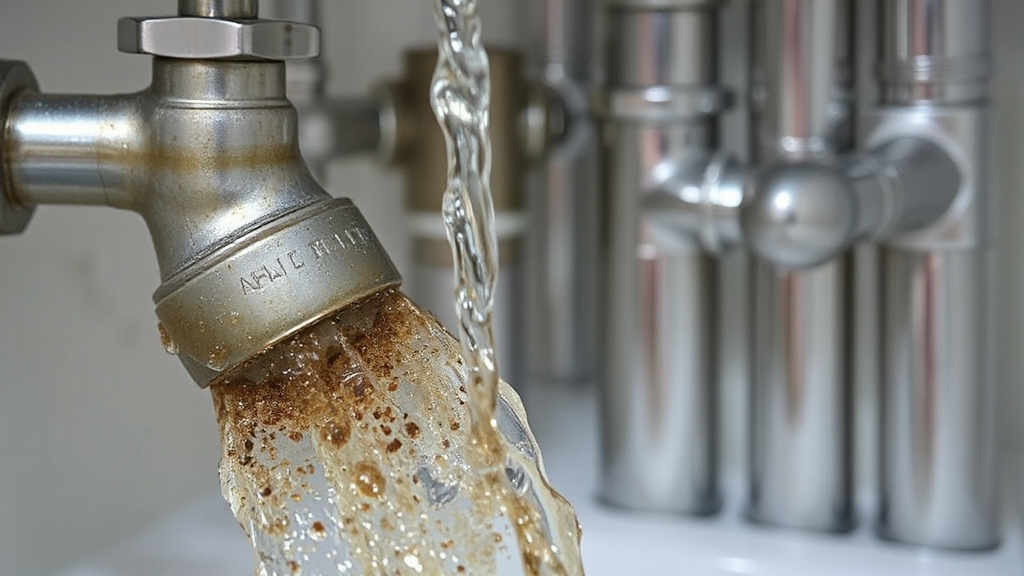
Flushing your water heater sediment every year is a simple step that can make a big difference in how well your heater works and how long it lasts. Sediment buildup reduces efficiency and can cause overheating, which damages your tank and raises energy costs. For effective water heater maintenance, remember to:
- Turn off power or gas before flushing
- Attach a garden hose to the drain valve
- Drain water until it runs clear
- Check your manual for safety tips
Taking these steps helps prevent rust, corrosion, and keeps your heater running smoothly year-round. You’re really protecting your home’s comfort!
Check Plumbing for Leaks
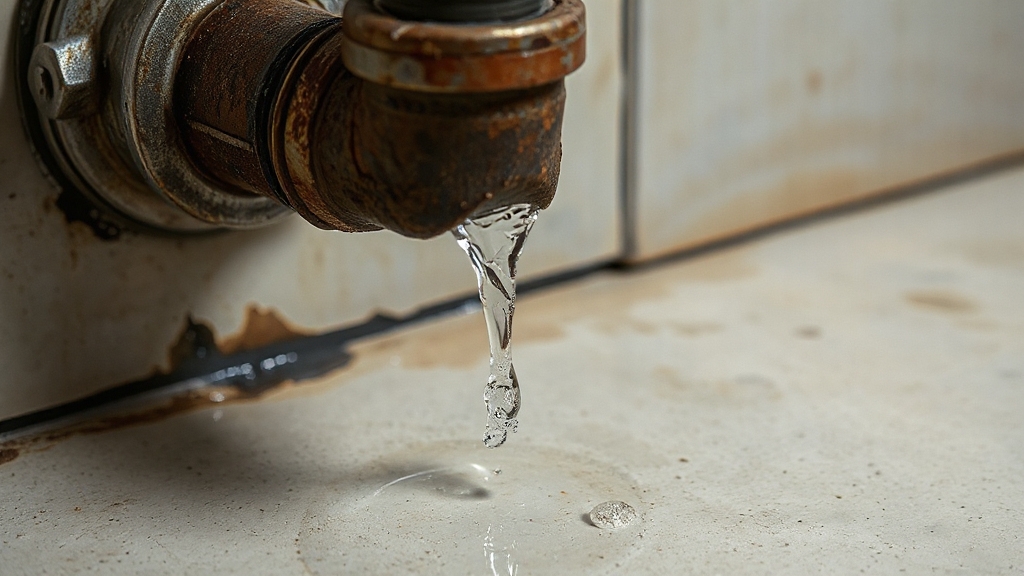
Three simple checks can save you a lot of trouble when it comes to plumbing leaks. First, I regularly inspect visible pipes for moisture or drips—one tiny leak wastes gallons yearly! Next, I look under sinks and around toilets for water stains or puddles that hint at hidden problems. Finally, I monitor my water bill for sudden spikes, a sneaky sign of leaks. Testing shut-off valves guarantees I can stop water fast if needed. These steps make leak detection part of my plumbing maintenance routine, helping me protect my home and feel confident in my care.
Inspect Exterior Paint and Siding

After making sure your plumbing is leak-free, it’s a good idea to turn your attention outside where your home’s paint and siding play a big role in keeping everything protected. Regular siding maintenance keeps your home looking great and prevents costly damage. Here’s what I do:
- Check exterior paint for peeling, cracking, or fading regularly
- Inspect wooden siding yearly for rot or insect damage
- Power wash siding annually to remove dirt and mildew
- Touch up chipped paint promptly to block moisture
Keeping up with these steps helps your home stay cozy and strong, season after season.
Trim Tree Branches Near House
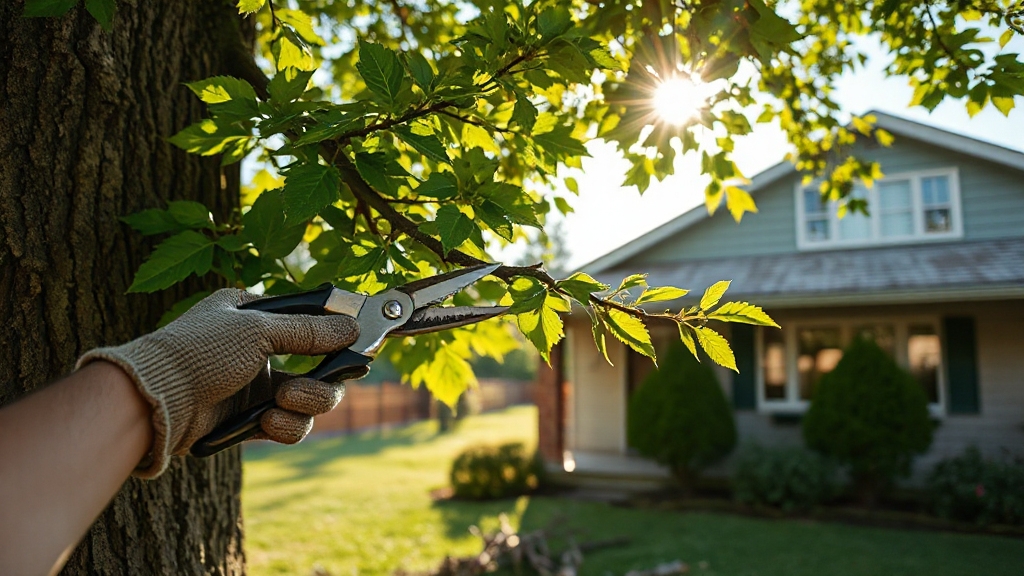
Keeping tree branches trimmed back from your house is one of those simple jobs that can save you a lot of headaches down the line. When branches hang too close, they risk damaging your roof or siding during storms. I aim for at least 10 feet of clearance to promote tree health and prevent roof rot. Pruning techniques matter, so I trim in late winter or early spring before new growth kicks in, helping trees bounce back quicker. For tall or heavy branches, I trust a professional arborist—they have the right tools and know-how to keep everyone safe.
Check Deck and Patio Safety

Once you’ve made certain your trees aren’t threatening your roof, it’s smart to turn your attention to the deck and patio areas where you spend so much time relaxing or entertaining. Regular deck maintenance and patio safety checks help keep these spaces inviting and secure. Here’s what I focus on:
- Inspect surfaces for rot, splinters, or loose boards.
- Test railings and stairs for stability.
- Clean thoroughly and seal wood decks every 2-3 years.
- Clear debris and guarantee proper drainage to prevent slips.
Taking these steps protects your outdoor haven and keeps everyone safe.
Inspect Basement for Moisture
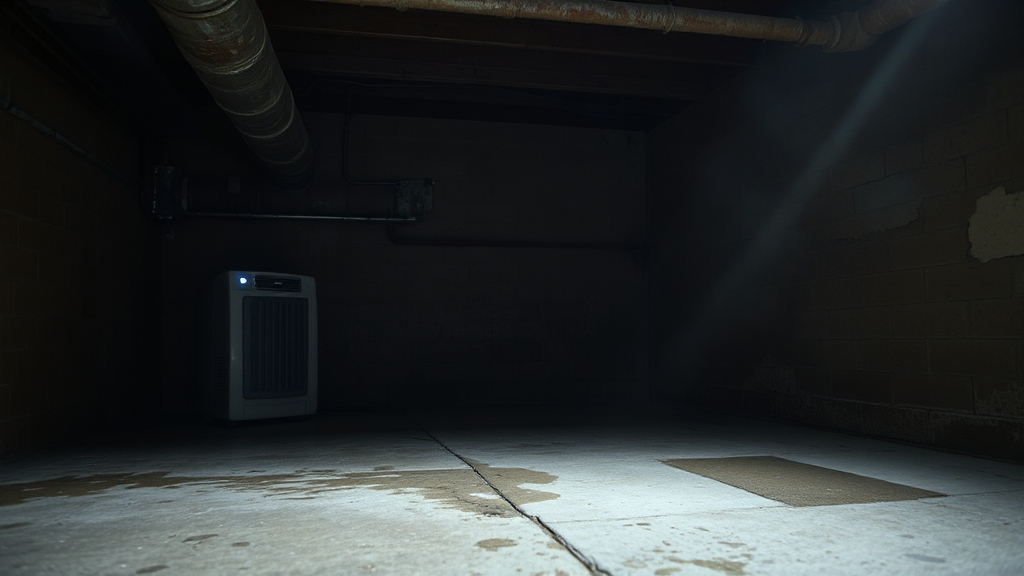
Anyone who owns a home knows that basements can be tricky spaces when it comes to moisture. I always start by checking for damp spots or cracks in walls and floors, which can let water sneak in. Using a moisture meter helps me track humidity levels—anything above 60% signals it’s time for humidity control methods like a dehumidifier. I also watch for condensation on pipes, a sign that insulation might need attention. Don’t forget moisture prevention techniques like keeping gutters clear so water flows away from your foundation. These steps keep our basements dry and cozy year-round!
Test GFCI Outlets Monthly

Every month, I make it a point to test all the GFCI outlets in my home because they play an essential role in preventing electrical shocks. Comprehending the GFCI importance keeps us safer, especially in wet areas like kitchens and bathrooms. Here’s how I keep electrical safety in check:
- Press the “Test” button on each outlet
- Make sure the “Reset” button pops out, signaling a trip
- If it doesn’t trip, replace the outlet immediately
- Repeat monthly to maintain protection
Clean Range Hood Filters
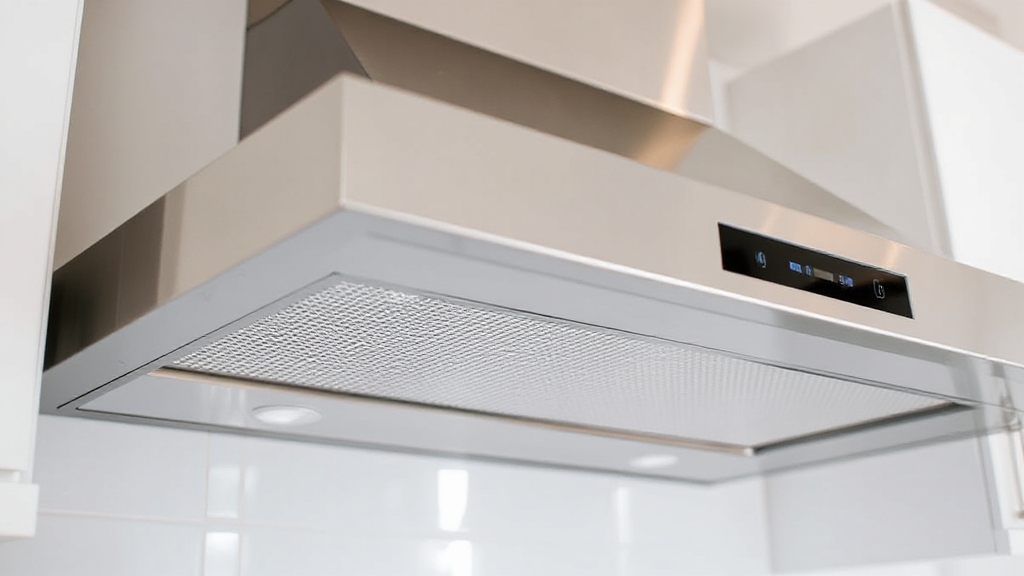
Cleaning your range hood filters at least once every couple of months can make a huge difference in keeping your kitchen fresh and safe. Regular range hood maintenance prevents grease buildup that traps odors and smoke. I find that removing the filters and soaking them in warm, soapy water or popping them in the dishwasher works wonders. These filter cleaning techniques not only improve ventilation but also lower energy costs and reduce fire risk. By staying on top of this simple task, you’re protecting your home and extending your appliance’s life—plus, your kitchen smells so much better!
Inspect Grout in Bathrooms
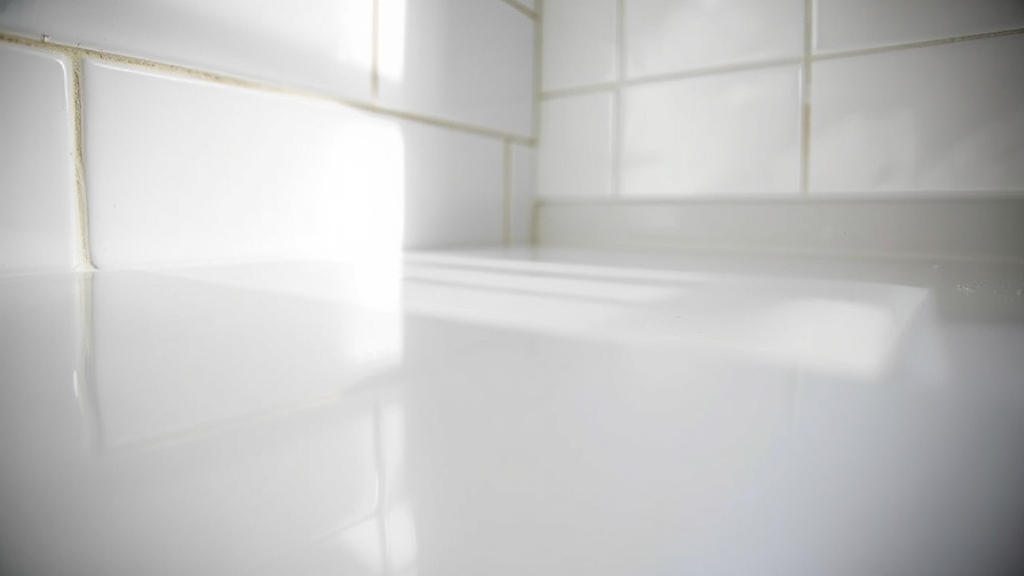
After giving your range hood filters some well-deserved attention, it’s a great time to shift focus to another often overlooked spot: the grout in your bathroom. Keeping grout in good shape is key to mildew prevention and avoiding costly water damage. I check mine twice a year and tackle any cracks with grout repair right away. Here’s what I do:
- Inspect grout for cracks or discoloration
- Clean with baking soda and vinegar to remove stains
- Seal grout after cleaning to protect against moisture
- Regrout every 5-15 years depending on wear
This routine keeps my bathroom fresh and leak-free!
Check Door Locks and Hardware

Three times a year, I make it a point to check the door locks and hardware around my home, and I can tell you it’s well worth the effort. Regular lock maintenance keeps everything running smoothly; I lubricate locks with a silicone-based spray to prevent jamming. Every month, I test exterior locks to verify they engage properly—no surprises there! If I spot rust or wear on knobs or deadbolts, I replace them right away. Lately, I’ve been exploring security upgrades like smart locks, which add convenience and peace of mind. Staying on top of this really strengthens home safety.


